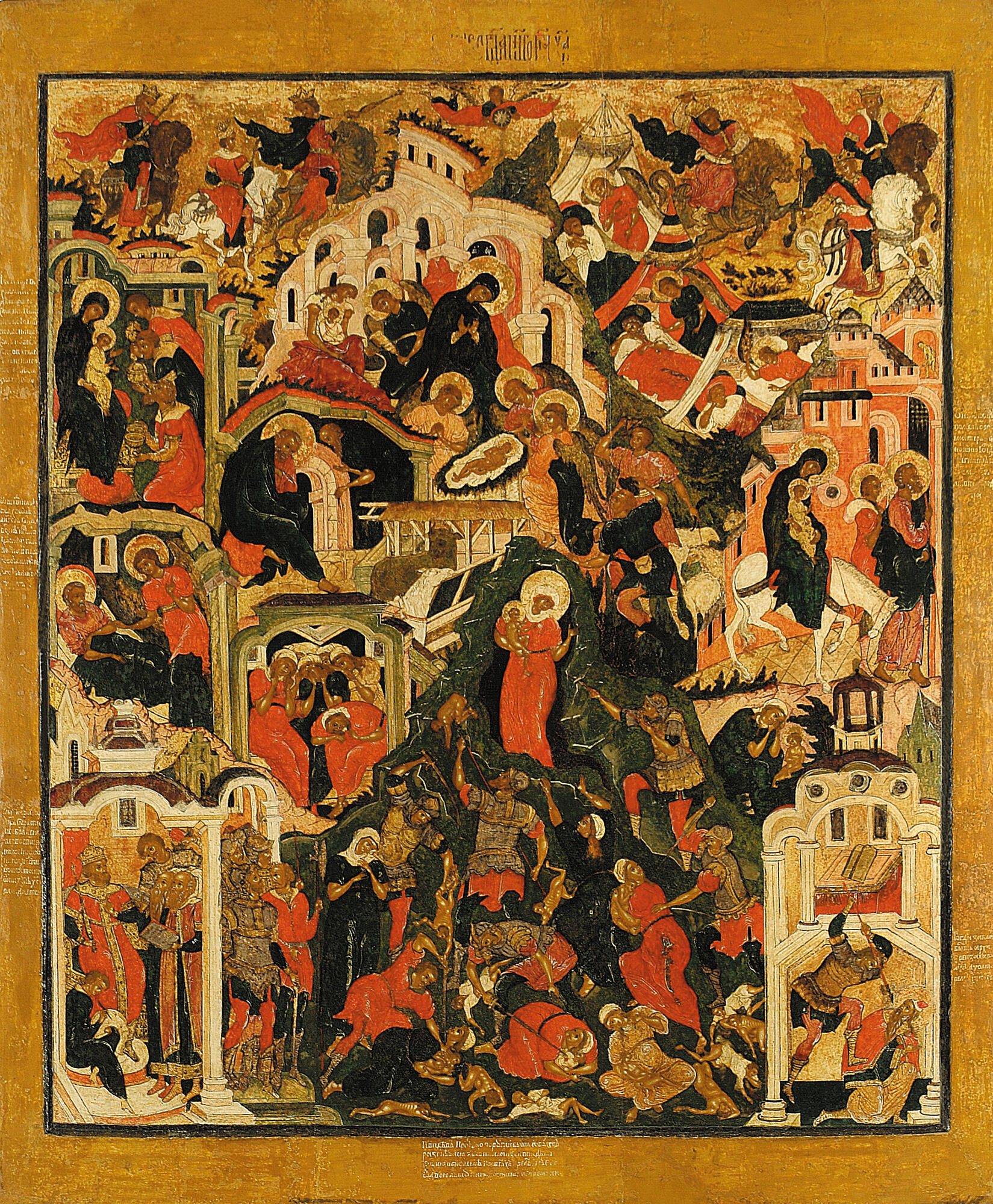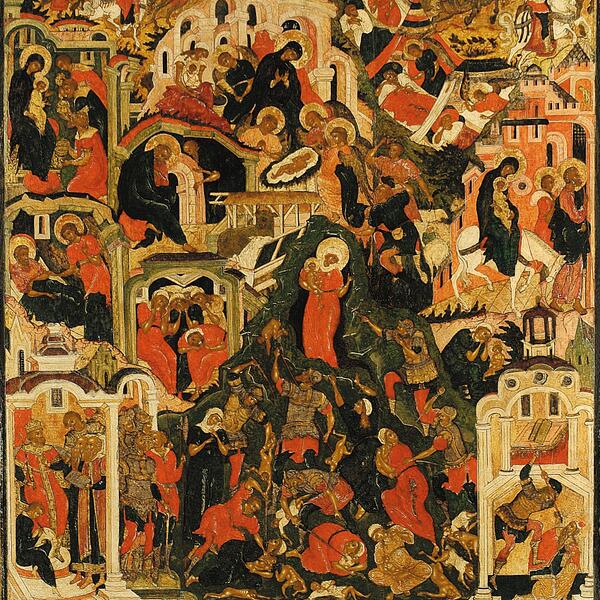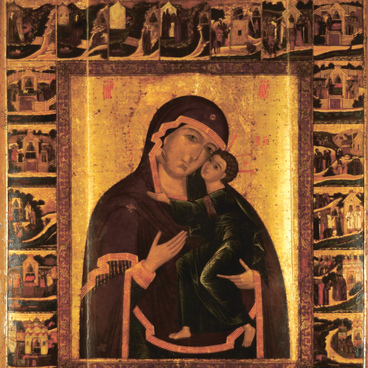The iconography of the Nativity of Jesus developed in catacombs during the early periods of Christianity and had mostly formed by the 7th century. “The Nativity of Jesus” (“The Yaroslavl Nativity”) is a prominent example of the detailed iconography popular among Yaroslavl icon painters. A large number of scenes typical of Orthodox icons was additionally fueled by the spread of non-canonical texts.
In the 17th century, the additional scenes of Yaroslavl icons were often depicted not in the borders but in a common figurative space. Such scenes are introduced as the execution of children organized by King Herod, the lamentation of Jewish mothers, the murder of the high priest Zacharias, the miraculous salvation of his wife Elizabeth and their son John the Baptist, and the salvation of the young prophet Nathanael.
In the center, there is an image of the Virgin Mary and the Child. In the earliest icons, the Mother of God is depicted sitting instead of lying on her bed, which emphasizes that her childbirth was painless unlike that of most women. In this icon, she is also portrayed sitting with her son.
At the bottom are an ox and ass symbolizing Isaiah’s prophecy, “The ox knoweth his owner, and the ass his master’s crib: but Israel doth not know, my people doth not consider” (Isaiah 1:3). As legend has it, sick and weak animals were brought to a cave where they were healed after witnessing the Birth of Jesus.
To the lower left of Mary are two male figures: the righteous Joseph and an old man dressed in skin clothing who is talking to him. Experts believe that this figure represents either the Devil who tempts Joseph, questioning Mary’s virginity, or Joseph’s own doubts. In the upper left corner are the Three Wise Men who are riding horses and following the Star of Bethlehem, and to the right are angels who are waking up the Wise Men and sending them to their land. The image of angels became widespread in the 8th and 9th centuries: initially, they were depicted as two or three figures, but in later icons, more angels were shown.
This icon is believed to have been painted by the Yaroslavl artist Iosif Vladimirov (who is mentioned in 1642–1666). Based on the only signed icon by Vladimirov “The Descent of the Holy Spirit Upon the Apostles” (1666), experts identified his unique style characterized by traditional Yaroslavl motifs. The name of Iosif Vladimirov was well-known in the 17th century. He had a reputation as not only a talented icon artist but also the first Russian art theorist. “The Message of Some Icon Painter Iosif to the Tsar’s Wisest Icon Painter Simon Fyodorovich” was written by Vladimirov and dedicated to his friend Simon Ushakov.
In the 17th century, the additional scenes of Yaroslavl icons were often depicted not in the borders but in a common figurative space. Such scenes are introduced as the execution of children organized by King Herod, the lamentation of Jewish mothers, the murder of the high priest Zacharias, the miraculous salvation of his wife Elizabeth and their son John the Baptist, and the salvation of the young prophet Nathanael.
In the center, there is an image of the Virgin Mary and the Child. In the earliest icons, the Mother of God is depicted sitting instead of lying on her bed, which emphasizes that her childbirth was painless unlike that of most women. In this icon, she is also portrayed sitting with her son.
At the bottom are an ox and ass symbolizing Isaiah’s prophecy, “The ox knoweth his owner, and the ass his master’s crib: but Israel doth not know, my people doth not consider” (Isaiah 1:3). As legend has it, sick and weak animals were brought to a cave where they were healed after witnessing the Birth of Jesus.
To the lower left of Mary are two male figures: the righteous Joseph and an old man dressed in skin clothing who is talking to him. Experts believe that this figure represents either the Devil who tempts Joseph, questioning Mary’s virginity, or Joseph’s own doubts. In the upper left corner are the Three Wise Men who are riding horses and following the Star of Bethlehem, and to the right are angels who are waking up the Wise Men and sending them to their land. The image of angels became widespread in the 8th and 9th centuries: initially, they were depicted as two or three figures, but in later icons, more angels were shown.
This icon is believed to have been painted by the Yaroslavl artist Iosif Vladimirov (who is mentioned in 1642–1666). Based on the only signed icon by Vladimirov “The Descent of the Holy Spirit Upon the Apostles” (1666), experts identified his unique style characterized by traditional Yaroslavl motifs. The name of Iosif Vladimirov was well-known in the 17th century. He had a reputation as not only a talented icon artist but also the first Russian art theorist. “The Message of Some Icon Painter Iosif to the Tsar’s Wisest Icon Painter Simon Fyodorovich” was written by Vladimirov and dedicated to his friend Simon Ushakov.



